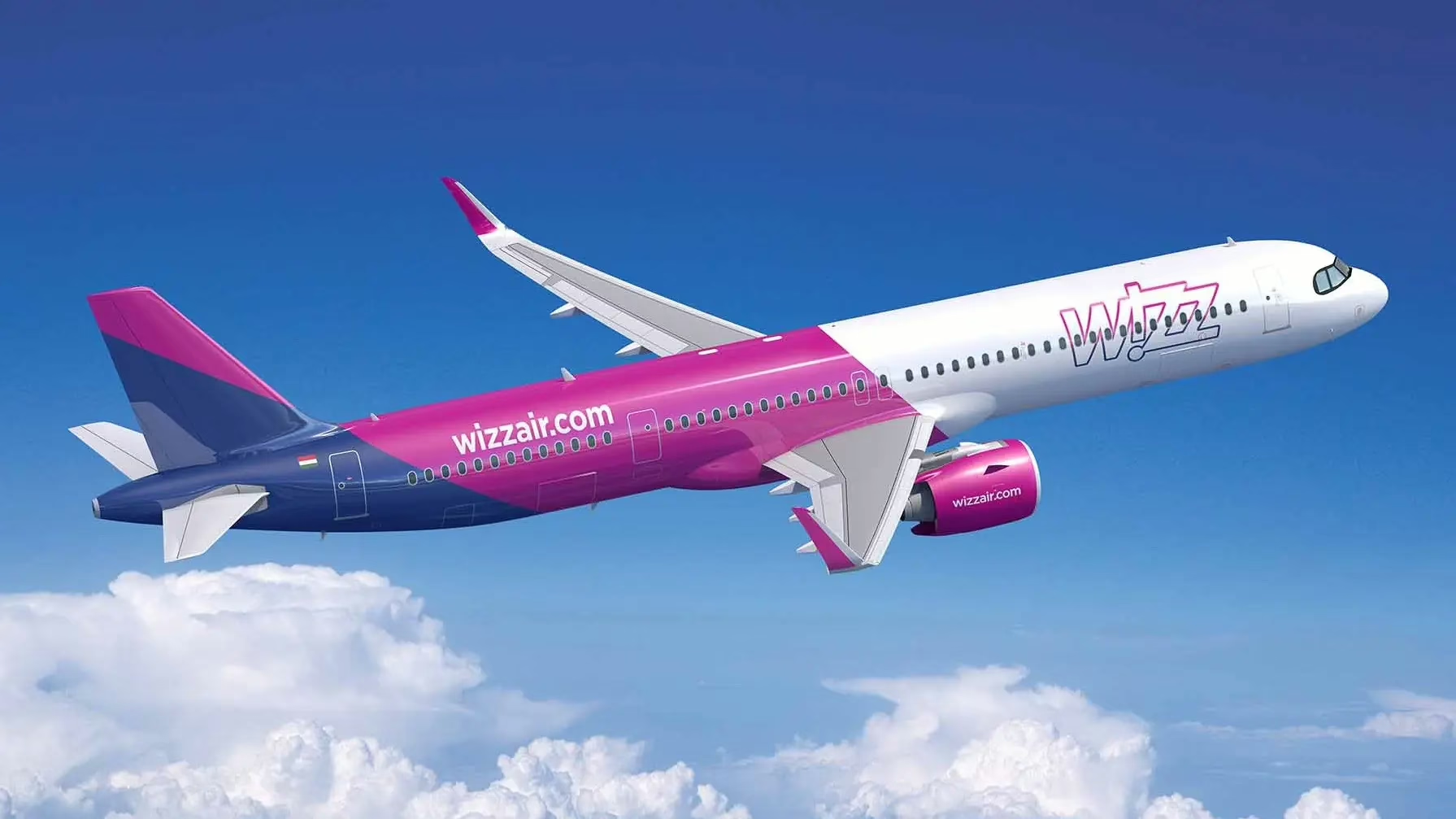The Hungarian ultra-low-cost carrier becomes the third airline worldwide to operate the extended-range aircraft and the first to power it with Pratt & Whitney engines, despite facing maintenance challenges across its fleet.
Wizz Air has received its first Airbus A321XLR aircraft, marking a significant milestone for the European ultra-low-cost carrier as it expands its long-range capabilities.
The delivery, which took place Monday at Airbus facilities in Hamburg Finkenwerder, makes Budapest-based Wizz Air the third operator of the A321XLR worldwide and the first to use Pratt & Whitney geared turbofan (GTF) engines on the model.
“There are a couple of deliveries that stick out,” Christoph Zammert, Airbus executive vice president and head of A320 family program, said during the delivery ceremony. “This is one. Wizz Air is joining a small and revenue-growing A321XLR family.”
The aircraft’s arrival comes after multiple delays. Wizz Air originally expected to hold a delivery ceremony on March 27, but the event was deferred and finally postponed on April 10 before the May 20 handover.
The airline will begin scheduled A321XLR operations on May 26 with daily service from London Gatwick to Jeddah, Saudi Arabia, following several days of short-haul flying to prepare the aircraft for service.
Owain Jones, Wizz Air Group chief corporate officer, outlined the deployment plans for the airline’s initial A321XLRs.
“Its third A321XLR will be with Wizz Air UK, which allows the carrier to do daily London Gatwick-Medina, Saudi Arabia, services,” Jones said in response to a question from Aviation Week.
The aircraft offers the same cabin configuration as Wizz Air’s A321neo fleet, with 239 seats in a single-class layout.
Jones emphasized the strategic importance of the new aircraft type for the carrier’s network expansion plans.
“The A321XLR is the aircraft which is opening up new markets at lowest prices, stimulating demand,” he said. “There are routes which may been traditional, a bit thinner [in terms of demand]; the A321XLR can build demand.”
He added that the extended range aircraft allows Wizz Air to pursue opportunities in regions like Central Asia and India. “We can connect all the dots of our network [with the XLR],” Jones said.
The delivery comes as Wizz Air embarks on a significant fleet expansion. During its current financial year, which began April 1 and runs through March 31, 2026, the airline expects to receive 50 aircraft.
“We took two aircraft in April, a total of seven in May and three in June,” a Wizz Air spokesperson said.
As of May 20, Wizz Air operates 232 Airbus aircraft, all under lease agreements. The airline has an additional 298 aircraft on order, all A321neos, including the remaining 46 A321XLRs. The carrier has not yet finalized engine decisions for some of the ordered fleet.
Jones said Wizz Air plans to phase out all remaining A320/321ceo models by 2028 as part of its fleet modernization strategy.
The airline continues to manage challenges related to required inspections and repairs of its Pratt & Whitney GTF engines. About 40 of Wizz Air’s A320/321neo family aircraft will be grounded in 2025 due to these issues, though Jones believes “the worst is over.”
“Last year, we flattened our capacity. All the new aircraft that came in last year pretty much kept this level,” Jones said. “Now with new aircraft coming in, we are back in growth mode.”
Despite these challenges, Wizz Air projects carrying 75 million passengers in fiscal 2025/26, a significant increase from 62.8 million the previous year.
Zammert noted that Airbus anticipates delivering its 300th aircraft to Wizz Air around the fourth quarter of this year, underscoring the long-standing partnership between the manufacturer and the airline.

Key Takeaways
- Wizz Air has received its first Airbus A321XLR, making it the third global operator of the type.
- The aircraft will begin scheduled flights between London and Saudi Arabia on May 26.
- Wizz Air faces continued challenges with grounded aircraft due to Pratt & Whitney engine issues.
- The carrier plans to receive 50 new aircraft this financial year as part of its fleet expansion.
- Passenger numbers are projected to rise to 75 million in fiscal 2025/26, up from 62.8 million.








